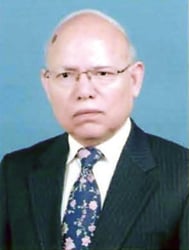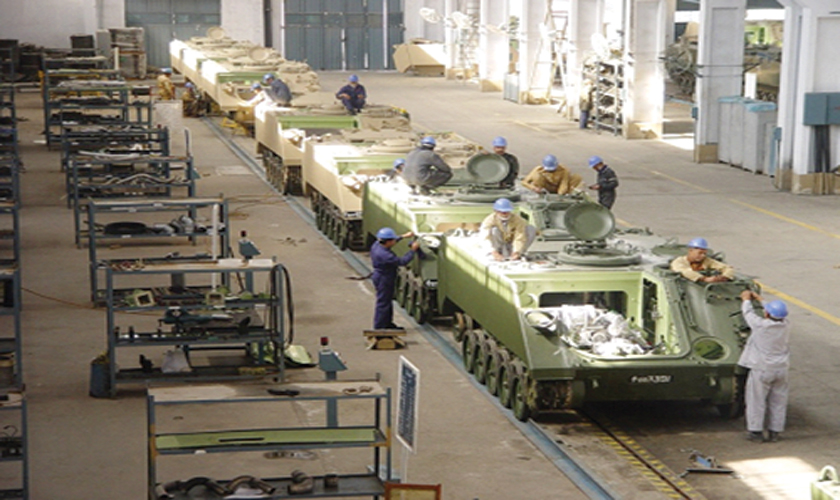INDUSTRY
The recent change of control of Heavy Mechanical Complex (HMC) at Taxila, a strategic state enterprise having the largest engineering, designing and manufacturing facilities, has been the most prudent arrangement. The action is marked with the management signing, as lead joint venture partner, a major contract for development of Jagran-II hydropower project of 48MW capacity in Azad Jammu and Kashmir, which was being delayed due to financial constraints on the part of HMC.
 Financed by the French Development Agency (AFD), the power project costing over six billion rupees is scheduled for commissioning and connecting to the national grid within three years. This major breakthrough in the power sector would open new avenues for indigenous plant machinery and technical services in a big way, meeting the nation’s aspiration for self-reliance.
Financed by the French Development Agency (AFD), the power project costing over six billion rupees is scheduled for commissioning and connecting to the national grid within three years. This major breakthrough in the power sector would open new avenues for indigenous plant machinery and technical services in a big way, meeting the nation’s aspiration for self-reliance.
Once the flagship of Pakistan’s heavy industry, Heavy Mechanical Complex, commonly known as HMC, has been through many highs and lows since its establishment in 1970s. The first major project constructed with the Chinese technical and economic assistance had its golden period then. Commercial production at its Mechanical Division was inaugurated by then president general Yahya Khan, whereas foundation stone of the Forge and Foundry Division was subsequently laid by prime minister Zulfikar Ali Bhutto.
Interestingly, Shah of Iran Reza Shah Pahlavi and Queen Farah Pahlavi were the first distinguished guests at the HMC, in January 1972, accompanied by President Bhutto and Begum Nusrat Bhutto. This followed by the visits of a host of heads of foreign states and governments and other dignitaries in successive years. President Zia-ul-Haq and president Farooq Leghari had also visited the prestigious state enterprise. The company was always included in the agenda of almost all foreign government and business delegations visiting Pakistan.
HMC is the pioneering industry to produce and supply complete sugar mills and cement plants. A large number of leading industrialists and major players in sugar and cement sectors frequented the company facilities in connection with placing orders for plant machinery. Technology was forthcoming from China, Poland, Australia, Japan, Italy, Germany, and UK for domestic production of a variety of products. During this period HMC designed, manufactured, and installed 42 sugar mills and six cement plants, of various capacities within the country.
Product mix also included road construction machinery (road rollers, asphalt mixing plants, and stone crushers), industrial boilers, material handling equipment (gantry cranes, overhead cranes, etc), and a variety of equipment for railways, steel mills, process and chemical industry, and power generation. The complex enjoys the singular distinction of successfully placing Pakistan on export map of the world that no other domestic engineering company, either in public or private sector, can boast similar achievement.
It has successfully executed a large number of contracts, in many countries, which were won against international competition. The turnkey projects, which related to design, engineering, construction and commissioning of three sugar mills and a cement plant, were completed in Indonesia and Bangladesh. In addition, a host of other engineering goods have been exported in the past to Bangladesh, Afghanistan, Sri Lanka, Ghana, Uganda, Kenya, the UAE, and other countries. Thus, the company has played a crucial role in the industrial and socio-economic development. Its main contribution has been in achieving self-reliance in the sector through import substitution, saving billions of dollars and, at the same time, earning millions of dollars through export promotion. The HMC earned significant profits, provided employment to thousands, trained hundreds of engineers and technicians, and developed new products for defence and strategic industries.
The domestic market for plant machinery for sugar and cement industries having been saturated for quite some-time, the company needed diversification of its production programme. Concerted efforts were made in this direction in the past, but plans did not materialise effectively, primarily due to absence of government support and its inconsistent policies.
The subsequent years, therefore, saw the decline of the company as its order book substantially reduced as a result of poor investment climate and slow industrial development. This resulted in gross under-utilisation of its installed production capacity. Sadly, the company remained on the divestment list for more than two decades, multiplying its woes.
With the passage of time, production facilities have become outmoded since no major investment was made in subsequent years to modernise installed machinery. Though rehabilitation of major machines has been done on a regular basis with the help of the Chinese, plant capability is no more compatible. Thus, the HMC's competitive edge has eroded over a period of years, and progressively it transformed into a jobbing organisation instead of plant machinery supplier. Currently, it produces equipment, components and spares for various industries, resulting in lower output and nominal profits. Meanwhile, the government also withdrew various fiscal concessions and policy support for indigenisation, which were available to HMC in the past.
On the other hand, HMC has a well-equipped product design and engineering office, with modern computer-based hardware and software facilities. The Design Centre of the HMC has recently been upgraded. Efforts are being made for technology acquisition and assimilation in new business areas, through technology transfer agreements and under joint ventures with foreign companies. Renewed emphasis is being placed on strengthening its human resources that have depleted significantly in past years. The company having certification of international standards and qualifications such as ISO, American Boiler Board, ASME and TUV etc, is commercially viable, despite technological and financial constraints it faces.
The complex has potential to re-emerge as market leader in supply of complete plants as well as other capital goods of international standards. A well-conceived business plan on short and long-term basis is in place, through expansion and diversification of its products range to cover equipment for energy, chemical, petrochemical, agro-based and other industries, and infrastructure sector.
 The comprehensive product range will include equipment for hydroelectric, coal-based, thermal, nuclear, urban and industrial waste power, in line with the projections of the National Security Power Plan 2005-2030. Indeed, the recent order for Jagran-II hydropower project will establish a new business line for the company, which already has another order in hand for the construction of the Naltar-III hydropower project of 16MW capacity in Gilgit-Baltistan.
The comprehensive product range will include equipment for hydroelectric, coal-based, thermal, nuclear, urban and industrial waste power, in line with the projections of the National Security Power Plan 2005-2030. Indeed, the recent order for Jagran-II hydropower project will establish a new business line for the company, which already has another order in hand for the construction of the Naltar-III hydropower project of 16MW capacity in Gilgit-Baltistan.
In fact, the HMC has contributed towards supply of machinery and equipment for medium and mega hydropower projects like Malakand III, Ghazi Barotha, Warsak and Tarbela, besides installing a number of small and mini hydropower projects in Gilgit-Baltistan and the Azad Jammu and Kashmir. Likewise, the company has manufactured in recent past substantial equipment for thermal power plants including K-Electric's Bin Qasim 4x210MW, Wapda/GENCO's Muzaffargarh 1x320MW and the IPPs such as Hubco and Lalpir power stations. The company has recently offered small capacity coal-based power plants to various industries, in partnership with the Chinese.
Planned expansion of domestic cement industry in the wake of implementation of the China-Pakistan Economic Corridor (CPEC) and mega infrastructure projects will give a significant boost to the HMC, regaining its strong position in cement sector and construction machinery. At the back of prospective growing demand, the cement sector is investing up to one billion dollars towards expanding its production capacities from the existing 45.6 million tons to 55.0 million tons per annum by 2018.
Lucky Cement is establishing its third plant of 2.30 million tons annual capacity in Chakwal (Punjab) and plans expansion of its Karachi plant to add 1.25 million tons a year. DG Khan Cement is going for addition of production capacity to the size of 2.50 million tons annual. Likewise, Pioneer Cement has finalised the scheme for 2.1 million tons annual capacity addition. Also, expansion of Cherat Cement to add 1.8 million tons capacity is projected, while Attock Cement and Kohat Cement would add a cement mill each of about 1.0 million tons per annum.
Similarly, it is of vital interest for HMC to consolidate and integrate advanced technology for manufacturing of sugar plants as well. While there is ban on expansion of sugar industry in Punjab, a new sugar mill is planned in Balochistan and expansion of a few sugar mills in Sindh is on cards.
The company needs to exploit the situation to its advantage as supply of components and spares for industry will continue to be recurring and regular business. In long term too, there will be tremendous demand for road construction and earthmoving machinery and railways equipment as road density is to be doubled and railways freight to be increased five-fold under the Pakistan Vision 2025, which also envisages addition of 45,000MW electricity, 20 percent increase in water resources and 70% increase in food security. Product diversification is key to success therefore and should be given due importance. Simultaneously, export market for its standard products could also be explored afresh in a big way.
Further, the company may plan to launch one of the identified industrial projects under the umbrella of D-8 Organisation for Economic Development among Islamic countries of Bangladesh, Egypt, Indonesia, Iran, Malaysia, Nigeria, Pakistan, and Turkey. To achieve the desired results to making HMC a viable enterprise again, a carefully modulated strategy, learning from the past experience, has to be adopted, with focus on company’s rebranding. Nonetheless, much will depend on performance of new management and the government support it gets in coming years. At the same time it is imperative to undertake on fast track the implementation of approved plans for balancing, modernisation, rehabilitation and expansion of production facilities, which have been inordinately delayed.
The writer is ex-chairman of the State Engineering Corporation